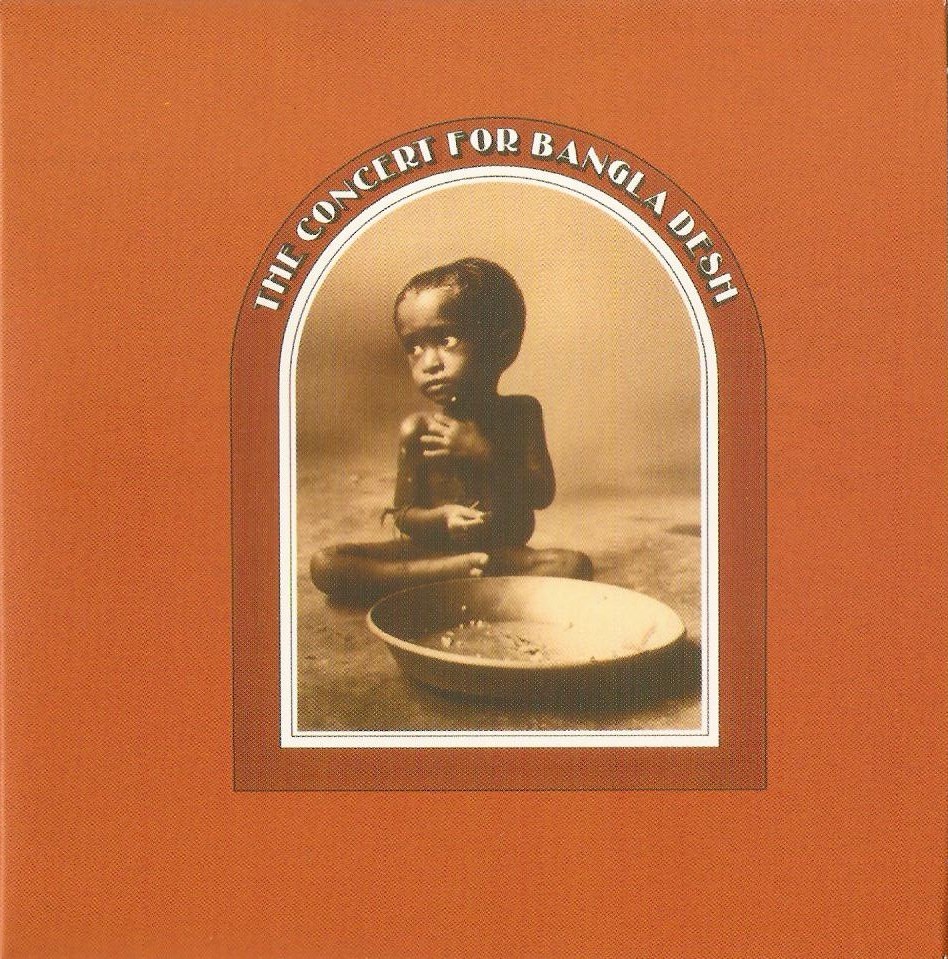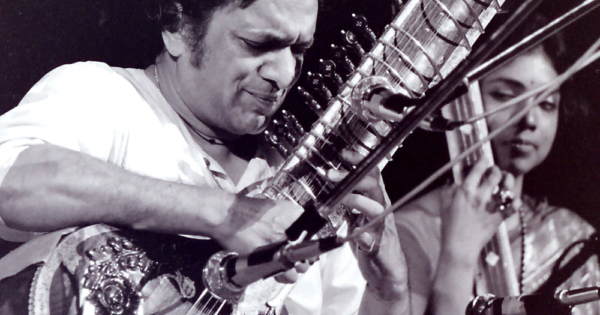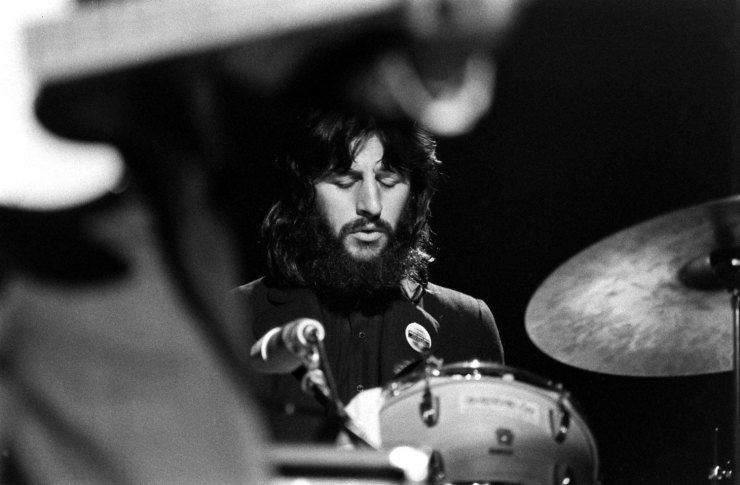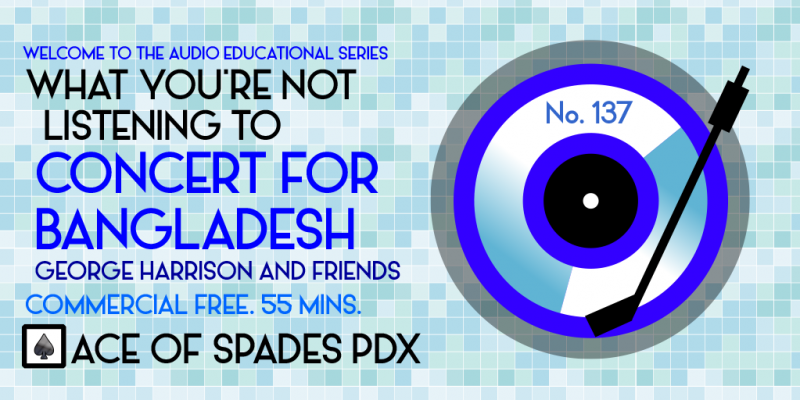Podcast: Play in new window | Download | Embed
Celebrating the 50th anniversary of the first ever major, large-scale charity benefit and album that all came about because one person who felt powerless asked another very famous friend for help. The result was The Concert for Bangladesh. #bangladesh #georgeharrison #charity
When you were once a member of the greatest thing since sliced bread, The Beatles, you would think that you had already done anything and everything there was to have ever been done in the music industry, including a string of firsts and achievements that more than 50 years after their dissolution, no one has even been able to truly top.

Then by chance, your friend and music instructor brings to your attention one of the worst humanitarian crises that would hit the latter part of the 20th century: the people of tiny country you have never heard of who were facing the simultaneous threats of violent and brutal military turmoil, a massive number of refugees, a cholera outbreak and starvation due to cyclones and torrential flooding, all in the span of literally half a year that affected approximately one million people.

You then do something that, believe it or not, is taught to this day in school textbooks in the region: you use your fame and connections, as well as your own money, to stage the first of its kind charity concert that would bring not only much needed funds and supplies, but an awareness of global problems far from your backdoor. That is, you do this if your friend is world renown Indian sitar player Ravi Shankar, who is from the region, and of course your name is George Harrison, who within months after the break-up of the Beatles in 1970 suddenly became the most successful solo star of the band with the release of his triple-album All Thing Must Pass.

The Concert for Bangladesh was preceded by another first, a worldwide charity single which hit the top 30 in the U.S., named after the country and told this story, set to music. Then two live concerts in August of 1971 in New York City were held, and the gate alone was over a quarter of a million dollars. The resulting album hit stores just before Christmas, and a concert film of the event not only raised the profile beyond the big apple, it would bring in over $12 million dollars (over $78 million today) initially to the George Harrison Concert Fund, which is managed by UNICEF.

As the legend goes, Harrison spent a literal calendar month phoning associates and friends daily to assist him with this task, and he paid not only for the expenses to bring all of this together, he even spent his own money, somewhere upward of a million pounds sterling (approximately $12 million in today’s money) to appease the tax authorities in the U.K. to see the project’s successful launch. None of the acts, and even Capitol Records, Harrison’s U.S. distributor, made a dime off of the event, the latter without more than a fair amount of public shaming when the label originally balked at the cost of a proposed live release.

Of course, it didn’t hurt that all of the performances were top notch, brought Indian classical music to its largest ever Western audience up to that point, made Leon Russell and Billy Preston stars and even brought back Bob Dylan out of retirement, playing only his second concert since 1966 and his first since that time in the U.S. It would also prove to be producer Phil Spector’s last major music milestone, which saw him set up the band in a similar fashion to his hallmark Wall of Sound treatment.

By Gary Todd – https://www.flickr.com/photos/101561334@N08/24945296947/
The concert and the resulting album and film was in stark contrast to the public feuding of two of the other Beatles, John Lennon and Paul McCartney, made Harrison the most beloved and cherished former member of the Fab Four; the whole thing was given the Grammy Award in 1972 for Album of the Year. But ultimately, it was never about ego, and it shows. Shankar would later state the following: “In one day, the whole world knew the name of Bangladesh. It was a fantastic occasion.”
First Part
- Introduction, George Harrison
- Bangla Duhn (edit) (live), Ravi Shankar
- My Sweet Lord (live), George Harrison
- That’s The Way That God Had Planned It (live), Billy Preston
- It Don’t Come Easy (live), Ringo Starr
- Band Introduction (with Yellow Submarine interpolation) (live), George Harrison
- While My Guitar Gently Weeps (live), George Harrison with Eric Clapton
- Medley: Jumping Jack Flash/Youngblood (live), Leon Russell
Finale
- A Hard Rain’s A-Gonna Fall (live), Bob Dylan
- Bangla Desh (live), George Harrison
Love to you all.
Ben “Daddy Ben Bear” Brown Jr.
Host, Show Producer, Webmaster, Audio Engineer, Researcher, Videographer and Writer
Instagram: brownjr.ben
Twitter: @BenBrownJunior
LinkedIn: benbrownjunior
Design Site: aospdx.com
“Copyright Disclaimer Under Section 107 of the Copyright Act 1976, allowance is made for ‘fair use’ for purposes such as criticism, comment, news reporting, teaching, scholarship, and research. Fair use is a use permitted by copyright statute that might otherwise be infringing. Non-profit, educational or personal use tips the balance in favor of fair use.”
